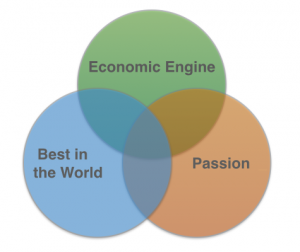
One of the most elegant and useful concepts from Jim Collins’ Good to Great study is the Hedgehog Concept.
The Fox knows many things, but the hedgehog knows one big thing - Archilochus
In his famous essay “The Hedgehog and the Fox“, Isaiah Berlin divides people into two groups: foxes that see the world in all its complexity and pursue many ends at the same time vs. hedgehogs that condense concepts and reduce challenges into simpler ideas. The parable would have the crafty fox attack the hedgehog with a variety of clever strategies, to be repeatedly beaten by the hedgehog’s simple, but powerful strategy - roll into a ball so the pointy parts are facing out. While the fox is crafty and nimble, the hedgehog is focused, determined and stays the course.
The companies that went from good to great discovered and then had the discipline to stay within a foundational hedgehog concept that kept them from being distracted from their core business. In contrast, the comparison companies that never made the leap to greatness often lost focus and took opportunities that were outside of their strengths.
A hedgehog concept is found at the intersection of three dimensions:

- What you can be the best in the world at.
- What drives your economic engine.
- What you are deeply passionate about.
The good to great companies (compared to comparison companies) were disciplined enough to understand and stick to their Hedgehog concept despite the temptation to chase after increased profits or ‘once in a lifetime opportunities’.
In the medical field we see some great examples of finding and sticking to a hedgehog concept. One local example is a practice called Sullivan Physical Therapy. This practice has a niche - women’s health - that they are great at. Another is Balance 360 that focuses on balance and vestibular disorders. In these cases, these practices don’t try to be all things to all people - they have a concept that they can be the best at, that drives their economic engine and that they are passionate about.
I don’t think that the hedgehog concept applies only to practice niches, though. At Texas Physical Therapy Specialists, we can be the best in the world at developing clinical specialists and team leaders. This is where our passion lies and the team it produces drives our economic engine. By understanding and sticking to our hedgehog concept, we have the potential to be the best in the world. We have to have the discipline to avoid ‘once in a lifetime opportunities’ that don’t fit within our concept and we have to have the discipline to stay the course when it seems like jumping to a different strategy might be more effective.
What’s yours?



